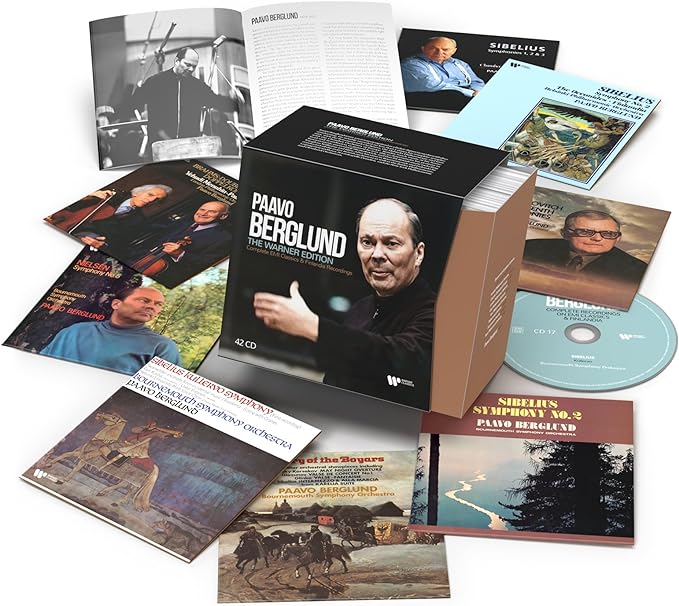 Paavo Berglund: The Warner Edition (Warner Classics)
Paavo Berglund: The Warner Edition (Warner Classics)
Jean Sibelius’s presence looms over this box like a friendly giant. Paavo Berglund (interestingly, one of the few left-handed conductors to have achieved international fame) recorded the seven symphonies three times and revisited the tone poems at various points in his career, and Warner Classics’ acquisition of the old Finlandia catalogue means that almost all of the conductor’s Sibelius is here, filling around half the box. It’s a mark of Berglund’s musical intelligence that there’s never any sense of going through the motions, of repeating himself on autopilot. Each of the three symphony cycles has a distinct flavour. Describing the earliest, taped in Bournemouth between 1970 and 1978, as the most ‘traditional’ isn’t to do it a disservice. Speeds are often expansive, and the orchestra’s bold, vibrant playing is a draw nearly five decades on. Berglund had met Sibelius in 1956 (their gnomic conversation is recalled in David Nice’s booklet essay) and spent time early in his career correcting printing errors in the composer’s string parts, the revised bowings later taken up by his young assistant Simon Rattle. Immaculate string playing is a constant in these Bournemouth performances – sample the fast triplets driving the 3rd Symphony’s resplendent final minutes, or No. 7’s radiant divisi writing. The shorter pieces are excellent too, with wonderful accounts of The Oceanides and Pohloja’s Daughter. Plus, there’s Ida Haendel playing the Violin Concerto and the two Serenades, and an exciting, trailblazing recording of Kullervo, the Helsinki University Male Voice Choir and a pair of excellent Finnish soloists flown over to Southampton for the 1970 recording sessions.
 Berglund’s second Sibelius cycle was made in the early to mid-1980s for EMI with the Helsinki Philharmonic. It slipped under the radar when released, unfairly overshadowed by ongoing Sibelius sets on the same label from Simon Rattle and Maris Jansons. Speeds tend to be swifter (particularly noticeable in symphonies 2 and 3), and the textures more sharply delineated. I’ve long enjoyed the LP containing Nos. 4 and 7, beautifully recorded in All Saints Tooting (the other instalments were taped in Helsinki), and an impressive Kullervo remake is coupled with the cantatas Our Native Land and The Origin of Fire. The final set was recorded in 1995 with an augmented Chamber Orchestra of Europe, generally sparer and leaner but no less colourful, symphonies 6 and 7 especially successful. No. 1 is another highlight, propulsive and exciting.
Berglund’s second Sibelius cycle was made in the early to mid-1980s for EMI with the Helsinki Philharmonic. It slipped under the radar when released, unfairly overshadowed by ongoing Sibelius sets on the same label from Simon Rattle and Maris Jansons. Speeds tend to be swifter (particularly noticeable in symphonies 2 and 3), and the textures more sharply delineated. I’ve long enjoyed the LP containing Nos. 4 and 7, beautifully recorded in All Saints Tooting (the other instalments were taped in Helsinki), and an impressive Kullervo remake is coupled with the cantatas Our Native Land and The Origin of Fire. The final set was recorded in 1995 with an augmented Chamber Orchestra of Europe, generally sparer and leaner but no less colourful, symphonies 6 and 7 especially successful. No. 1 is another highlight, propulsive and exciting.
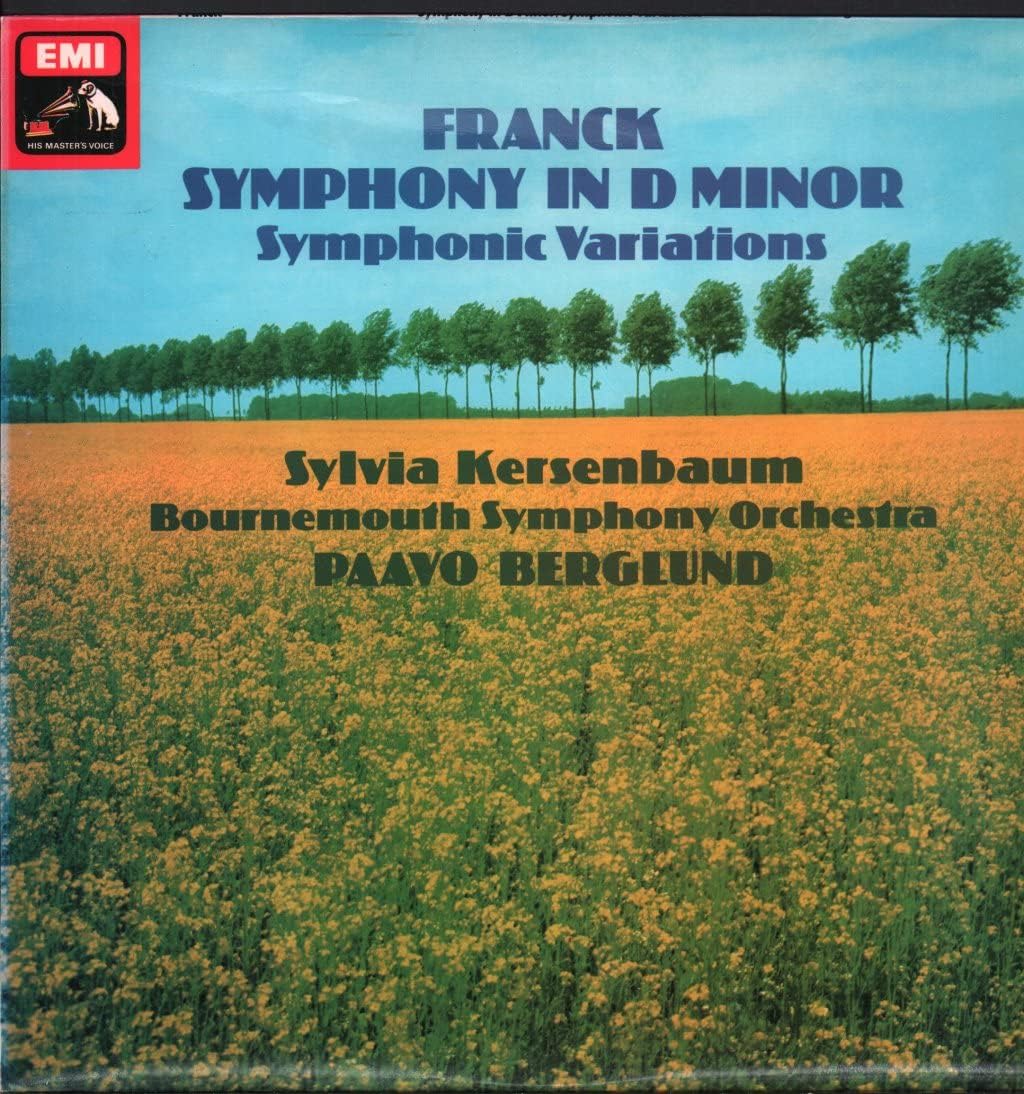 What of the rest? Flicking through the original EMI sleeve designs and spotting some long-forgotten favourites took me back to browsing through record libraries in the early 1980s, and there are plenty of intriguing novelties too. John Ogdon plays Glazunov’s Piano Concerto, coupled with a quirky Passacaglia, Recitative and Fugue by the Armenian-American composer Richard Yardumian. Berglund’s imposing Franck D minor Symphony was new to me, as was a disc pairing Grieg’s jolly Symphonic Dances with his Old Norwegian Romance with variations. There’s a disc of Sir Arthur Bliss, recorded a year after the composer’s death in 1975, his entertaining Cello Concerto coupled with the suite from the ballet Miracle in the Gorbals. The closing number, titled, rather ominously, “The Killing of the Stranger”, is real edge-of-the-seat stuff. Berglund’s Bournemouth recording of Nielsen 5 holds up well, and there’s a still-impressive disc of the violin concertos by Britten and Walton, Ida Haendel again a charismatic soloist. Berglund’s forays into British music inevitably hit home, with punchy readings of Vaughan Williams’ 4th and 6th Symphonies, and there’s my go-to recording of Walton’s Cello Concerto, with Paul Tortelier. Berglund keeps the outer movements from dragging, and the orchestral playing is exquisite.
What of the rest? Flicking through the original EMI sleeve designs and spotting some long-forgotten favourites took me back to browsing through record libraries in the early 1980s, and there are plenty of intriguing novelties too. John Ogdon plays Glazunov’s Piano Concerto, coupled with a quirky Passacaglia, Recitative and Fugue by the Armenian-American composer Richard Yardumian. Berglund’s imposing Franck D minor Symphony was new to me, as was a disc pairing Grieg’s jolly Symphonic Dances with his Old Norwegian Romance with variations. There’s a disc of Sir Arthur Bliss, recorded a year after the composer’s death in 1975, his entertaining Cello Concerto coupled with the suite from the ballet Miracle in the Gorbals. The closing number, titled, rather ominously, “The Killing of the Stranger”, is real edge-of-the-seat stuff. Berglund’s Bournemouth recording of Nielsen 5 holds up well, and there’s a still-impressive disc of the violin concertos by Britten and Walton, Ida Haendel again a charismatic soloist. Berglund’s forays into British music inevitably hit home, with punchy readings of Vaughan Williams’ 4th and 6th Symphonies, and there’s my go-to recording of Walton’s Cello Concerto, with Paul Tortelier. Berglund keeps the outer movements from dragging, and the orchestral playing is exquisite.
 CD 42 is a riot, containing such treats as Johan Halvorsen’s Entry of the Boyars and Ole Bull’s Herd Girl’s Sunday, and another anthology mixes Grieg’s Peer Gynt suites with music by Hugo Alfven, whose Swedish Rhapsody No 1 lives on as an ice cream van jingle. Berglund’s sense of fun in these lighter numbers shines through: they really sparkle. We get an idiomatic performance of Smetana’s Ma Vlast with the Staatskapelle Dresden, and a Brahms Double Concerto where Tortelier is partnered with a rather anaemic-sounding Yehudi Menuhin, well past his technical best in 1984. Berglund’s Bournemouth Shostakovich was always impressive, with a sonically spectacular Symphony No. 7 and sober but humane readings of Symphonies 5 and 10, originally released as a 2LP package. Best of all is a stunning reading of Symphony No. 11, still a real rarity when it was recorded back in 1978. Berglund’s account feels like a live recording, the tension perfectly sustained in the long opening “Adagio” and the second movement’s percussive onslaught brilliantly captured by EMI’s engineers. The symphony’s final minutes are shattering. A handsome tribute to a truly great conductor, and not just for Sibelius fans. Snap it up while you can.
CD 42 is a riot, containing such treats as Johan Halvorsen’s Entry of the Boyars and Ole Bull’s Herd Girl’s Sunday, and another anthology mixes Grieg’s Peer Gynt suites with music by Hugo Alfven, whose Swedish Rhapsody No 1 lives on as an ice cream van jingle. Berglund’s sense of fun in these lighter numbers shines through: they really sparkle. We get an idiomatic performance of Smetana’s Ma Vlast with the Staatskapelle Dresden, and a Brahms Double Concerto where Tortelier is partnered with a rather anaemic-sounding Yehudi Menuhin, well past his technical best in 1984. Berglund’s Bournemouth Shostakovich was always impressive, with a sonically spectacular Symphony No. 7 and sober but humane readings of Symphonies 5 and 10, originally released as a 2LP package. Best of all is a stunning reading of Symphony No. 11, still a real rarity when it was recorded back in 1978. Berglund’s account feels like a live recording, the tension perfectly sustained in the long opening “Adagio” and the second movement’s percussive onslaught brilliantly captured by EMI’s engineers. The symphony’s final minutes are shattering. A handsome tribute to a truly great conductor, and not just for Sibelius fans. Snap it up while you can.
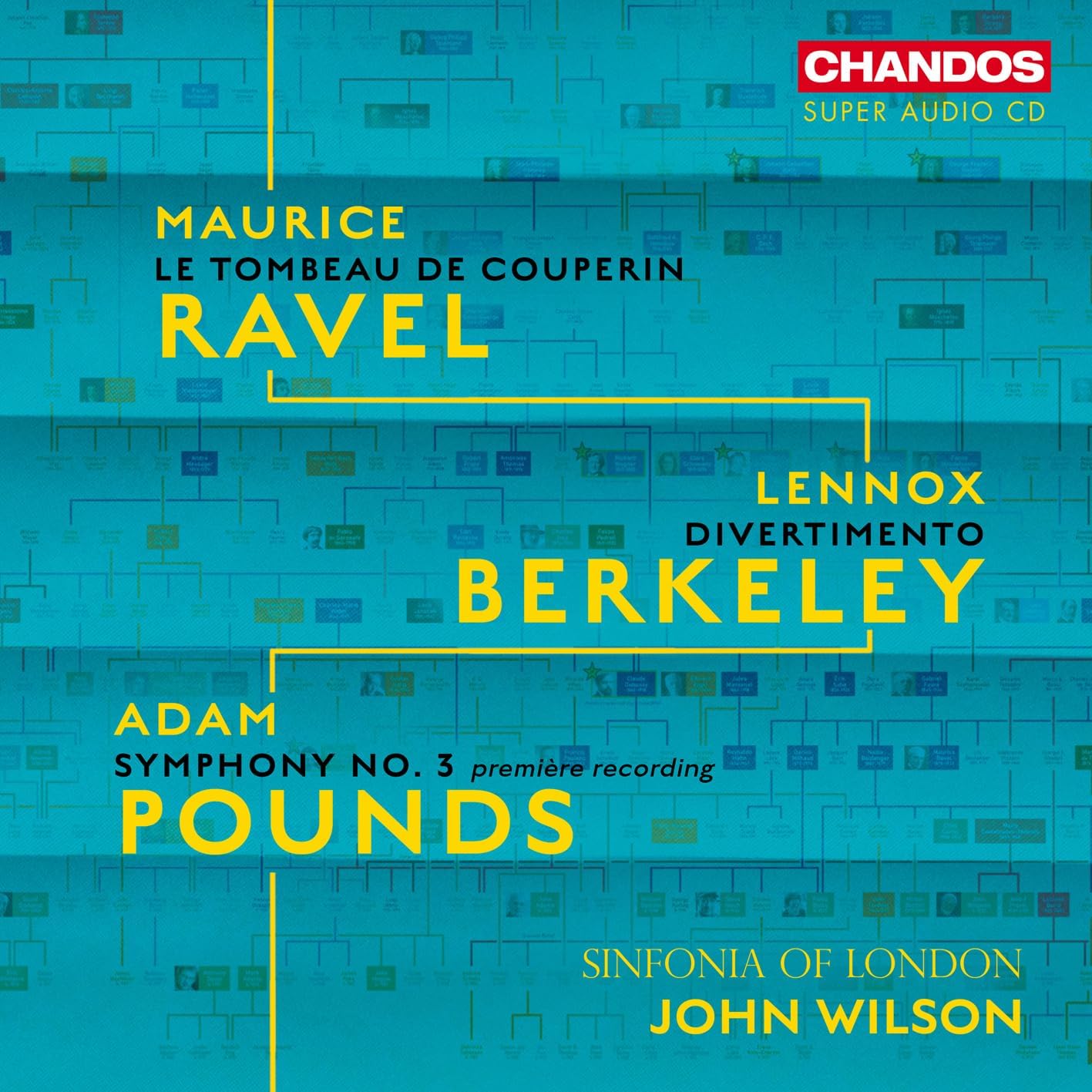 Ravel, Berkeley, Pounds: Orchestral Works Sinfonia of London/John Wilson (Chandos)
Ravel, Berkeley, Pounds: Orchestral Works Sinfonia of London/John Wilson (Chandos)
Ravel: Daphnis et Chloé Sinfonia of London/John Wilson (Chandos)
The Chandos production line of brilliant albums by John Wilson and his Sinfonia of London continues to turn-out turn out hit after hit. But the factory metaphor doesn’t do justice to the humanity at the heart of the project. The repertoire is chosen carefully, but is all clearly stuff Wilson loves, and the crafting of the releases, from preliminary scholarly research to the performances and engineering in the studio, shows artistry and musicianship of the first rank.
Le Tombeau de Couperin was Ravel’s memorial to friends lost in the First World War: theirs are the tombs, more than Couperin. But this is no po-faced eulogy: Wilson plays up the bright colours and perky rhythms in a brisk “Prélude” and jaunty “Forlane”. There is more reflection in the “Menuet” before boisterousness returns in the final “Rigaudon”. Ravel was a mentor to the young Lennox Berkeley, whose Divertimento is next. Berkeley’s delightful Serenade for Strings features on a previous Sinfonia of London album, and I was happy to be introduced to another enjoyable and well-made piece, whose joviality belies its wartime genesis. The four movements have a Ravelian wit and refinement, from the jocose “Prelude”, the contemplative “Nocturne” through to the brilliantly self-confident “Finale”.
Adam Pounds (b.1954), in turn a student of Berkeley, is a completely new name to me. His Symphony No.3 is given its premiere recording here. It was written in 2021 as a response to the Covid pandemic, specifically the “sadness, humour, determination and defiance” of the time. It’s a substantial piece, and in its third movement “Elegy”, expansive and ambitious. Stylistically it wouldn’t have surprised me to learn it was written in the 1940s or 50s: Pounds is no avant-gardist. He acknowledges the influence of Bruckner and there is also more than a touch of Shostakovich in the finale, but it’s well worth a listen.
 The other album at hand was also the result of a lockdown project. John Wilson had long been aware of the many errors in the published edition of Ravel’s masterpiece Daphnis et Chloé, and finally had the time on his hands to take on the task of making a new performing edition, putting right the several hundred infelicities in the score and parts. In fact, it isn’t that simple: some contradictions between score and parts seem to have been because Ravel entered changes into the parts in rehearsal, which didn’t make their way into the score.
The other album at hand was also the result of a lockdown project. John Wilson had long been aware of the many errors in the published edition of Ravel’s masterpiece Daphnis et Chloé, and finally had the time on his hands to take on the task of making a new performing edition, putting right the several hundred infelicities in the score and parts. In fact, it isn’t that simple: some contradictions between score and parts seem to have been because Ravel entered changes into the parts in rehearsal, which didn’t make their way into the score.
Either way Wilson is to be thanked and congratulated for rationalising what has long been an unacceptably messy situation for such an important piece. And, as such, this recording (released in November 2023) would automatically be indispensable as the only available recording that uses really accurate materials. Fortunately, it is also superlatively played, and completely worth its place in the pantheon of recordings entirely on its musical, and not just musicological, merits.
The players, a handpicked ensemble of the great and good of British orchestras are, as usual in these releases, not named. Apart, that is, from flautist Adam Walker, who has a concertante part that is front and centre. I would like to be able to credit other players by name, but will have to suffice in saying there is a poetic cor anglais solo in the “Danse suppliant de Chloé”, some lovely horn moments – it’s all great. Strangely, the choir are all named, and are a similarly starry bunch. Their first entry, emerging from a subterranean opening, is immense, and brilliantly recorded: I got it blaring out of my speakers at full whack. They are also hauntingly beautiful in the introduction to Part Two. Enough. I could wax lyrical about piece and recording for another 1,000 words but need actually only say this recording is a must-have for existing Ravelians, or the Ravel-curious. - Bernard Hughes
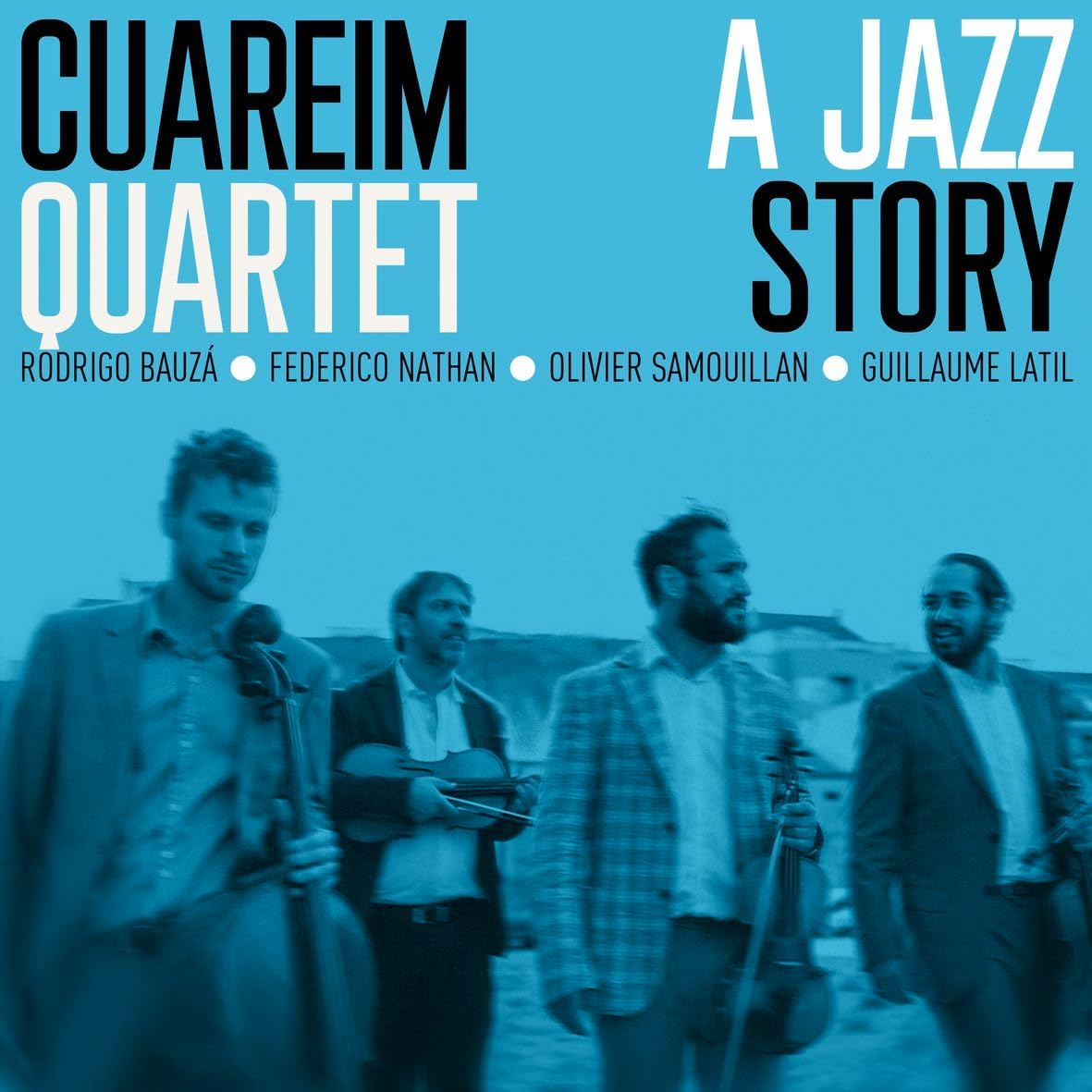 Cuareim Quartet : A Jazz Story (Art Melodies)
Cuareim Quartet : A Jazz Story (Art Melodies)
A truly remarkable album of insanely high quality string quartet playing, and from start to finish. Cuareim Quartet consists of two violinists from South America, both now resident in Europe, and a violist and cellist from France. The four work brilliantly together, they seem to be constantly sparking off what the others do, and also challenging each other. All four can improvise fluently and their collective time-feel never ceases to amaze. They start with the familiar suavity and ease of Django Reinhart swing. The way they are able to find balance, happiness empathetic note-bending so easily is completely addictive, their sense of adventure and fun irresistible. Can a pizzicato viola and cello combine to imitate one rhythm guitar? Yes, and wow.
They could probably happily have stayed in that very agreeable place for the whole album. But "A Jazz Story" is a much more ambitious undertaking than that. The four players have set themselves the arduous challenge to achieve as much stylistic and emotional variety as possible. As the album blurb states, they seek to "trace the history of Jazz and its transformations, from its origins to the present day." So we find everything from the well-known melodic contours of "Koko/ Cherokee", in homage to Charlie Parker, to the glorious rhythmic springiness of “Samba Latente", a fast-flowing nod to Hermeto Pascoal and Egberto Gismonti. And in the compositions of violinist Rodrigo Bauza there is a real sense that we are dealing with a sonic visionary. In the liner notes he has written on his own compositions, he talks about string players delivering “the intensity and brilliance of brass instruments”. The track “Please No Licks!” is the most challenging and “out” of the album. It claims to be a homage to free jazz, but sounds as if probably based on a tone row. Just as John O'Gallagher has demonstrated that there are rigid pitch structures at work in Coltrane's "Interstellar Space", Bauza's compositions probably have similar hidden features and systems. And at the opposite extreme, the album has a tune like Federico Nathan's “Redemption Ballad” which charms completely with its schmaltz, sentimentality and sadness.
France-Musique's flagship "Open Jazz" programme will be making the album their featured disc of the day on 13 February. "A Jazz Story" is not only pure joy, it is also a very fine piece of work which fully deserves such attention. - Sebastian Scotney
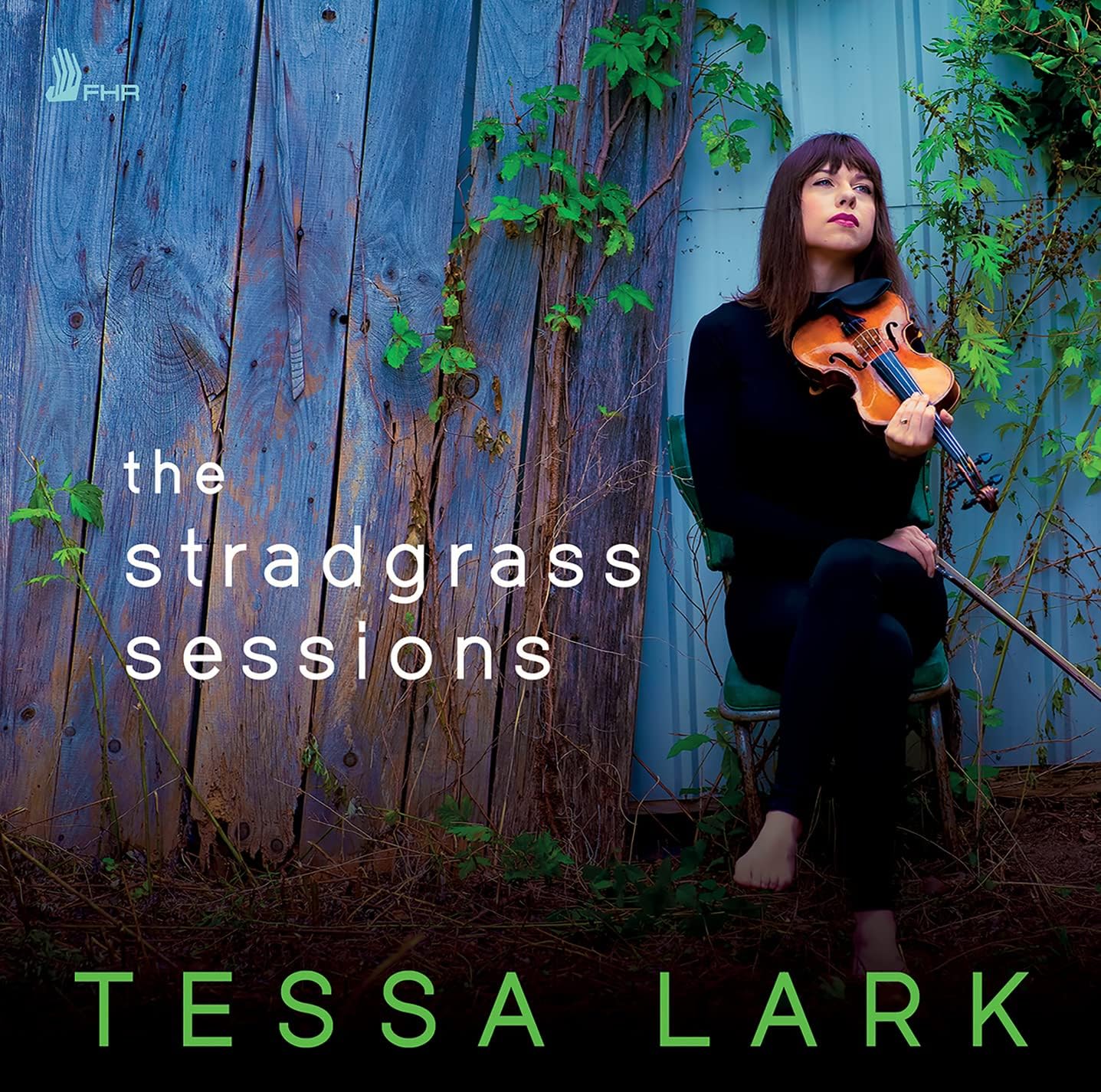 The Stradgrass Sessions Tessa Lark (First Hand Records)
The Stradgrass Sessions Tessa Lark (First Hand Records)
“Stradgrass” is a portmanteau word coined by violinist Tessa Lark for her unlikely blend of bluegrass fiddling and the classical styles more normally produced by a Stradivari violin. Bluegrass is not my natural aesthetic home, but Lark won me over with her persuasive combinations, pointing up intersections with classical music that hadn’t previously struck me. She plays either alone – as in the opening “Jig and Pop”, half moto perpetuo study and part wild dance – or in duet with mandolin, fiddle, piano or double bass.
The selection of miniature dances from Bartók’s 44 Duets for Two Violins are a good point of reference, as he was already essaying this kind of folk/classical mash-up over 100 years ago. Here they are presented with Sierra Hull on mandolin replacing the second violin, giving a percussive edge. They also pair on Hull’s own composition Chasin’ Skies, which is groovy and high energy, with lots of very tight fast unison playing. This is also a feature of Edgar Meyer’s Concert Duo for Violin and Bass which he also plays, showing himself every bit as nimble as Lark herself. Perhaps my favourite track is John Corigliano’s STOMP, which has a plain-spoken assertiveness and punchy dissonance that floats away into fragile introspection. At the other end of the emotional spectrum is Michael Cleveland’s Lazy Katie, for which he joins Lark on his fiddle for an exhibition of “twin fiddling” which is generous and life-affirming. - Bernard Hughes
 Neoteric Ensemble: Volume 1 (Ulysses Arts)
Neoteric Ensemble: Volume 1 (Ulysses Arts)
Subtitled ‘Original compositions for 6 piece ensemble’, this release’s stylish monochrome sleeve art suggests that we’re in for 70 minutes of dour but worthy contemporary music. Then you notice that the individual tracks have names like “Huanan Market” and “Bosh”, so dipping one’s toe in is inevitable. Wisely, in fact, as this punchy, exuberant collection is a joy from start to finish. Neoteric Ensemble boasts an intriguing mixture of brass and woodwind players: LSO principal trumpet James Fountain is among them, and Sarah Field doubles, unusually, on both saxophone and trumpet. Brass or wind purists shouldn’t hesitate – if you’re a fan of Stravinsky’s pungent Ebony Concerto, you’ll enjoy this disc. Two of the pieces are from group members. Saxophonist Rob Buckland’s Soundscapes started life as three sax duets, Buckland playing them with his students at Manchester’s RNCM. “Mojito” is a great opener, three minutes of lopsided mariachi music, with some nifty contributions from tubist Adrian Miotti. Trumpeter Toby Street’s Karatina Market is a euphonious depiction of a Kenyan street market.
There’s another market in Pandemic 19-20, Andy Panayi’s four-movement suite taking us from the market in Huanan through to the virus’s spread and eventual end of lockdown. “The Traveller Goes Forth” opens with a perky solo line which abruptly turns into a tutti blast. Aptly, it’s preceded by Misha Mullov-Abbado’s infectiously jazzy The Effra Parade, a musical attempt at describing the composer’s inability to leave his Brixton neighbourhood during lockdown restrictions. Dan Jenkins’ Bach in Barbados bookends some frenzied party action with a pair of sweetly noble chorales, and Mark Nightingale’s little Arriba is a fun encore. Few contemporary collections have made me smile as much this one, these musician’s insouciant virtuosity always serving the music. Can we have Volume 2 soon, please?
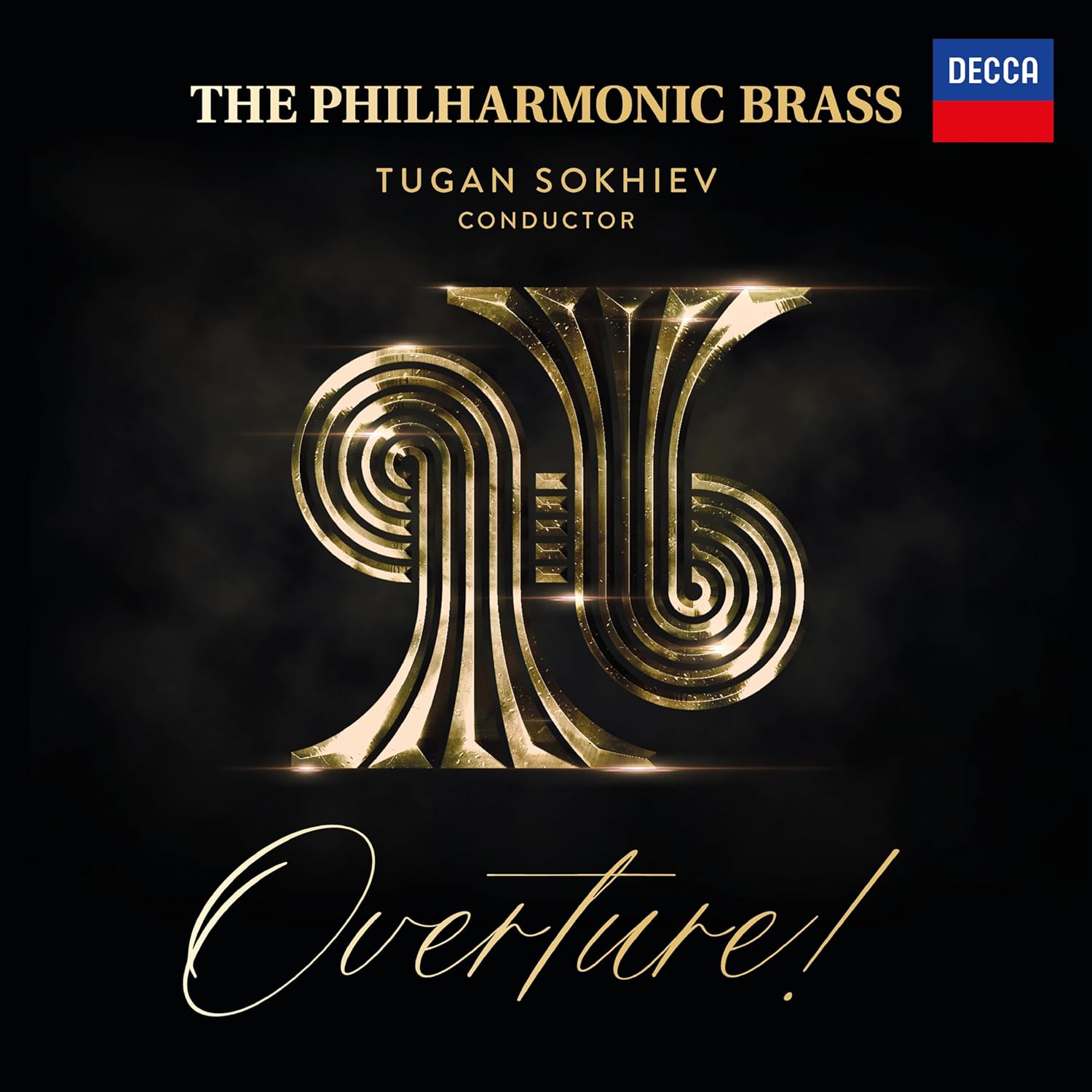 Overture! The Philharmonic Brass/Tukhan Sokhiev (Decca)
Overture! The Philharmonic Brass/Tukhan Sokhiev (Decca)
Slightly portentously, this album is billed as “twenty members of the Berlin and Vienna Philharmonics embarking on a voyage of discovery”. It actually consists of six very different overtures skilfully arranged for brass and percussion. One issue with brass transcriptions is the near-impossibility of reproducing fast string lines – unless, as is the case here, you’ve got a crack ensemble on hand. Try Peter J Lawrence’s zingy take on Shostakovich’s Festive Overture, and marvel at the players’ quick-fire articulation at 4’20”. Matthias Hofs version of Beethoven’s Egmont is similarly effective, Hofs knowing exactly when to deploy the piccolo trumpets. Tugan Sokhiev’s driving basic tempo serves the music well, with some dazzling tonguing at the start of the major key coda. Hofs has also arranged Verdi’s already brassy La Forza del Destino, the idiomatic results similar to something you might hear in a performance from a northern English Brass band – a good thing as far as I’m concerned.
The other works are transcribed by Lawrence. The slow introduction to Borodin’s Prince Igor is beautifully played, though I’m not sure about the tuned percussion when the music speeds up, and the offbeats at the start of Dvorak’s Carnival might not be to all tastes. More ambitious is Gershwin’s ten-minute Cuban Overture, here boasting some brilliant tuba playing and gleaming trumpet work. The opening minutes are exciting, but the final minutes feel a little too safe, the group's punches pulled. Still, a fun disc, and one’s curious to hear what the group tackle next.

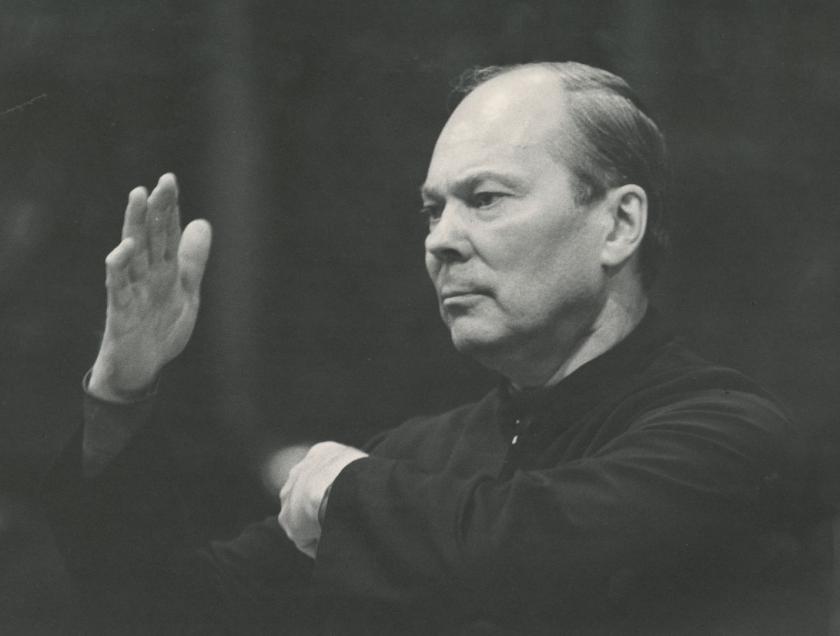





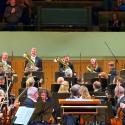







Add comment